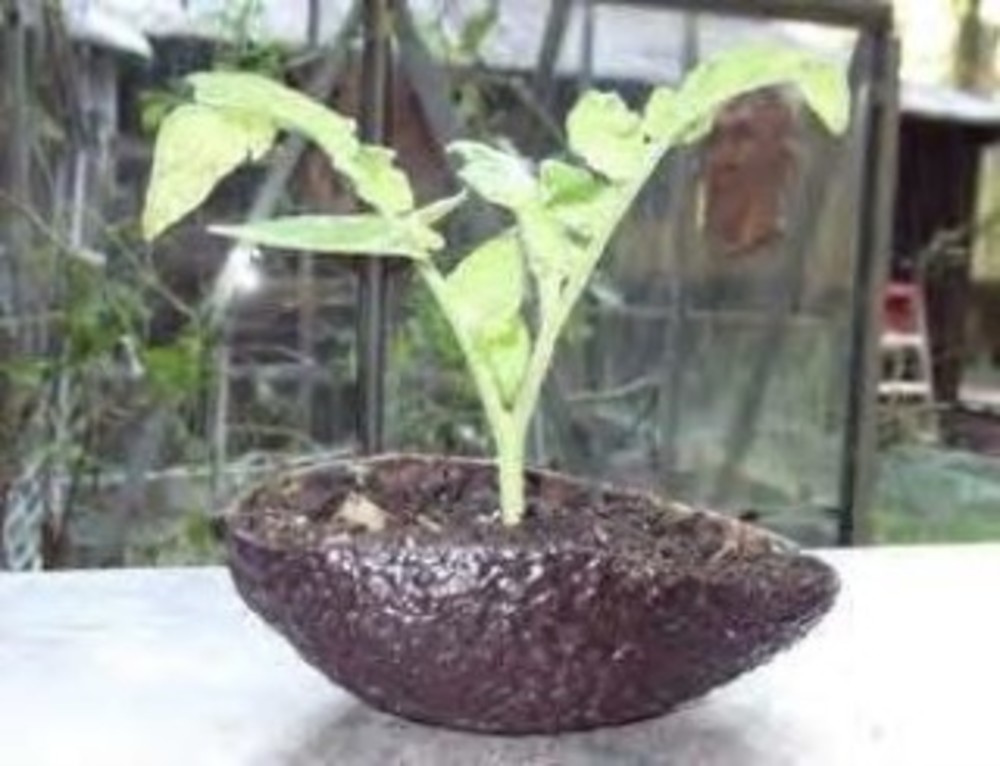Creative planting pots

Anything that holds dirt and drains excess water can be used for a planting pot. This includes metal coffee cans (be careful when poking holes in metal cans), milk jugs, soda bottles, plastic food containers, old toys, hollow rocks, trash cans and children’s swimming pools.
The key to using containers successfully is to be sure they have a way to drain excess water well. Peat pots do this automatically. With aluminum pans, plastic containers, coffee cans, etc., you have to poke holes to let water drain from them. Use a knife or screwdriver, and make a lot of small holes rather than a few large ones. (Large holes let too much soil wash out of them.)
The three most common planting containers are peat pots, clay pots and plastic pots. Peat pots come only in small sizes, 2-4 inches in diameter, and are the least expensive of the three. When transplanting from peat pots to other containers, you do not have to remove the plant from the peat pot. Instead, place the entire peat pot with the plant into the hole in the soil of the new container. Clay pots have the advantages of looking better than plastic pots and absorbing more excess water, but clay pots are usually the most expensive pots. When transplanting from a clay pot, you may not be able to tap it hard enough to loosen the root ball. Instead, use a large spoon to loosen the dirt around the side of the pot until it slides free. Plastic pots are inexpensive and come in all sizes. You must be certain to have good drainage and to line the bottom with a layer of rock before filling with dirt. Use pieces of gravel or rock approximately 1-2 inches in diameter or length.
If you don’t use peat pot planters, place a 1/2-inch layer of gravel (pea to marble size) on the bottom of your planting container before adding soil. This allows water to drain better from the soil. Remember that it is very difficult to overwater plants unless they do not have good drainage. Fill your planters, whether starting with peat pots or huge trash cans, almost but not quite, to the top of the container. If you fill to the top, soil will overflow the container when you water.
Avocado, orange and grapefruit skins make cute starting containers. Cut the fruit in half (avocado should be cut lengthwise), and let dry for a few days. Be sure to scrape out the excess fruit. To use, fill nearly to the top with soil, water, pour off excess water and plant your seed. Like with the peat pot, you can plant the entire fruit skin when transplanting to a larger container. The fruit skin will decompose over time.
Stockings also make very creative planting containers. Place two cups of soil (with several pinches of seeds mixed in) into an old stocking. Squeeze tightly, and tie the ball of soil in place using the rest of the stocking or a string. Water the soil ball thoroughly. You can decorate the stocking by drawing a face on the stocking, putting on buttons for eyes and watching the grass grow in as the “hair.” Hang in a sunny window and keep thoroughly moist.
CAROLYN LINDER is the Director of Early Childhood, Israel, and Educational Resources at the Agency for Jewish Learning in Pittsburgh, Penn. Excerpted from AJL’s “Guide for Making Indoor Gardens with Young Jewish Gardeners” and reprinted with permission. To download the complete guide, vis-it ajlpittsburgh.org







